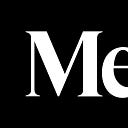A trip to the movies, in 2018
Perspectives on a changing industry ahead of this year’s Oscars
Movies are part of our cultural fabric — both the act of going to see the films and the impact they have on those of us watching. Whether it’s strangers bumping elbows as they dig into their popcorn or sitting by yourself huddled under a blanket in your living room, the magic of the movies is often in the experience itself. But the cultural phenom that is the movie industry is more than just box office numbers and red carpet faux pas. What has made this industry such a cultural powerhouse is the emotion a piece can inspire, how we’re brought into the story with each and every laugh, punch, tear, and heartbreak.
Over the past few years, the movie industry has seen a pretty substantial transformation. From changes in distribution models, to technologies that beam movies to pocket-sized screens, to new funding models that open up the creative decision process and prompt conversations about who gets to tell their story — and these changes show no sign of letting up. So with Hollywood’s annual golden moment coming this Sunday, it felt like the right time to take a look at the future of film — how those streaming shows instantly arrive in your living room, what it means to see your childhood story come to life in a polarizing year like 2018, and, of course, what does this all mean for VR! Below are six very unique perspectives on the industry that we hope will make you hit a mental pause. Grab your popcorn.
In the age of rising film stars like Netflix and Amazon, it’s hard not to see the writing on the wall for what Hollywood once built its world around: visits to the movie theater. M.G. Siegler shares his perspective on where Hollywood is going (and no it’s not just down) with the powerhouse Disney still smashing hits out of the park and newer business models like MoviePass shaking the industry up (for better and worse). So what does this mean for old Hollywood? Well, that remains to be seen — and depends on how these frenemies’ business moves play out. One thing is certain, that the tides are shifting, and fast.
Going into Netflix binge mode involves planting yourself firmly into the couch with snacks in reaching distance. Flash forward and you’re deep into the world of maniacal politicians, pre-teens battling monsters from the upside down, or an LA cop and his orc partner finding themselves embroiled in an out-of-this-world turf war. But how much do you really know about what happens in the seconds from when you fire up your Netflix to when the chills hit your spine as the credits roll? Tech writer Mayukh Nair breaks down the highly technical steps Netflix has orchestrated to bring hours of enjoyment without moving a muscle, literally. Nair’s piece makes it hard to not respect the system they’ve put in place, and may even make you think twice before yelling at the spinning red circle on your screen.
Documentary films often feel like an add-on at the big awards shows — sneaking in with a quick award before rushing to commercial break. But that pattern has shifted in the past few years as new distribution models have entered the marketplace and a culture of wanting to know and do more (rather than simply escaping) has grown. Chief Creative Officer for Weber Shandwick and LA-based artist Josh S. Rose highlights some of the biggest drivers of this change and what we can expect in the future for the documentary film genre.
A Wrinkle in Time is a childhood classic — a story that instantly wraps us up in the world we escaped to as young readers. Weeks before Ava DuVernay’s blockbuster film adaptation opens, researcher and author M. B. Moorer shares a personal essay about how the novel has shaped her life and helped her find a sense of identity. Through vignettes of pitching Madeleine L’Engle on a movie at age seven, to her own struggles with isolation and change during her parents’ divorce, to realizations about her insecurities as she neared adulthood, Moorer demonstrates the continued impact one story can have on a person. And how, as a passionate fan, seeing your world come to life can fulfill your wildest dreams in ways you couldn’t have imagined.
When we think of the future of film, it’s hard not to consider how VR will play a role. The technology has the power to take stories that already capture every ounce of your attention and make you feel like an active participant in them. But what does that mean when it comes to making the film itself? Science and technology journalist Signe Brewster gives us a peek at some of the challenges VR moviemakers face and the inventive solutions they’re creating, like thoughtful positioning of cameras (it’s more than just watching out for the dreaded boom mic!) and out of the box lighting design. While advances are made in how this technology is used, we’re only just starting to understand the very real responses they can inspire.
Imagine a world where you’ve never been hurt or afraid, a world where your past is free of pain. In this expansive long read, writer and performer Max S. Gordon examines his conflicted relationship to the idea of Wakanda, a fictional African nation in Ryan Coogler’s Black Panther. As Gordon describes it, “Wakanda is presented to us as a sunlit dream; real American racism and the colonization of Africa are the stuff of nightmares.” But what is gained — and lost — by “coasting along on the myth” of an Afro-futurist paradise? Black Panther has broken innumerable barriers, but no vision of utopia is universal. Through engaging critically with the film, Gordon confronts systems of representation and colonization that continue to impact the way we think and the stories we tell.

